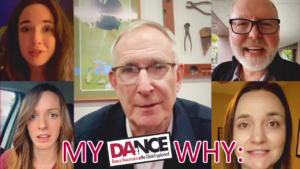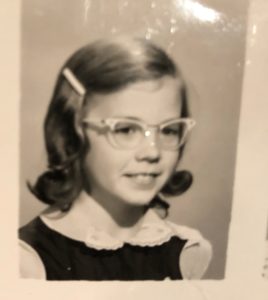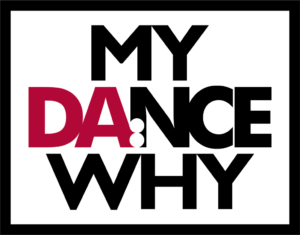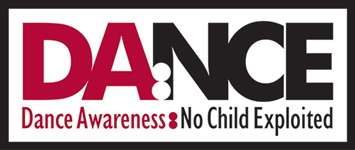
“A child’s innocence is the one gift, that once stolen, can never be replaced.”
―Jaeda DeWalt
Innocence: Ignorance, freedom from cunning; lack of worldly experience
DA:NCE just released a new resource called ‘My DA:NCE Why’. In that video, along with others, I recorded a brief statement about why I founded DA:NCE: “There’s been a cultural shift from healthy, educational children’s dance to harmful, hypersexualized children’s dance in adult costumes, choreography and music. I want to change that.” It was a brief statement that needs a longer explanation into the journey of innocence. This blog is my chance to go deeper.
Children need a childhood, not a walk into adulthood before they are ready.

Mary Bawden
Childhood is a magical time. I remember having ‘school’ with younger children in my garage (I was the teacher) and dancing(before I took dance lessons) to Swan Lake in 2nd grade. Then there were the countless ‘neighborhood shows’ throughout my early years, the long lazy days of summer filled with reading, cooking, playing silly games, turning on the sprinklers to cool off in the heat, and talking to my imaginary friends. I also remember playing the part of a dog as my sister Beth fed me cracker crumbs. Then there was family movie night: the ‘Fabulous 52’ (special Saturday TV movies) offered once a week. Many times we made pop-corn before the event, and sometimes we made an exciting visit to get a hamburger(Biggest Best on 66) before the show. Later, the family dog put up with my sewing projects that costumed him in countless outfits. Poor thing. I also taught him to drink milk out of a miniature baby bottle that I used for one of my dolls. I still remember his look of resignation. He was one of many family beagles. The last dog in our family howled when I played classical piano. I decided to find out why. I turned that howl into a science experiment with a tuning fork in 10th grade and brought him to school to show my class-mates.
Like many families, my mother, father, and 3 siblings had our challenges but nothing stole my innocence related to sex. I don’t remember having to think about or deal with adult sexuality before it was age-appropriate. I loved a childhood filled with ‘The Secret Garden, Tom Sawyer, and The Wizard of Oz’. Although this doesn’t always happen, I believe that it is a worthy cultural goal. And just as important, protecting childhood innocence from adult sexual exposure is supported by evidence-based research:
Let’s start with the definition of what hypersexualizes a girl from the American Psychological Association(APA).
They say that she is sexualized if:
- She is valued only for her sexual appeal or behavior rather than other characteristics
- Her physical attractiveness is equated with being sexy
- She is treated as a sexual object — that is, made into a thing for others’ sexual use, rather than seen as a person with the capacity for independent action and decision making
- Sexuality is inappropriately imposed on her
Children who are hypersexualized in dance fulfill the criteria set up by the APA. Unfortunately, this definition also includes some boys. So sad.
Innocence lost.
Childhood distorted.
Now let me share additional research to help you understand why children’s hypersexualized dance is harmful rather than healthy.
- Brain research shows that children who are exposed to adult sexuality before it is age-appropriate suffer cognitive and academic harm affecting brain development: the basal ganglia(responsible for reactive, impulsive behavior) versus the pre-frontal cortex(responsible for reflective, self-controlled behavior). With exposure to adult sexual material, children exhibit increasing impulsive behavior rather than increasing self-control. A child’s brain is simply not mature enough to handle the “neuro-chemical blitz” brought on by exposure to adult sexuality. Source 1; Source 2
- Children copy what they see. Brain research refers to this as mirror neurons. What is a mirror neuron? Source 1; Source 2 Mirror neurons allow us to learn healthy or harmful patterns through imitation. They are especially key for child development. Source 1; Source 2
- Additional research shows that when a child is sexually objectified, she/he is seen as someone not worthy of dignity and not intelligent. She/he lacks an independent mind. Because of that, external objectification also breeds violence. After all, if children are objects, we can use them as a means to an end. Source
- Cultural Grooming. Researcher Gail Dines calls it a ‘pornified culture’. Source The evidence demonstrates that boys who are groomed by adult sexual material are hyper-masculinated while girls see themselves as objects. Source 1; Source 2
I often say that the solution to harmful dance is healthy dance because the art form integrates mind, body and spirit in ways that no other art form is able to do. Along with developmental integration, there are numerous evidence-based studies that demonstrate the beneficial outcomes of healthy dance. Source 1; Source 2
But remember, that researched information with positive outcomes only relate to healthy dance. Harmful children’s dance outcomes produce external, dehumanizing messages. Source: American Psychological Association, Task Force on the Sexualization of Girls. (2007). Source
Is it any wonder that DA:NCE has a mission, vision and four educational goals that value educating adults and protecting children from hypersexualized dance:
DA:NCE Mission & Vision
Mission: To bring international awareness and education to stop the exploitation through hypersexualization of children in dance.
Vision: To promote the art of dance and its benefits to children by creating educational materials that advocate for their safety and protection in all dance environments.
Educational Goals:
-To protect children from hypersexualization in adult costumes, choreography and music, and to protect the art of dance
-To create free research materials to give adults informed choices about the differences between healthy or harmful dance
-To engage in respectful conversations about hypersexualization without shaming/demonizing adults or dance studios so that there is a path for reflection and changed perspectives
-To communicate the hypersexualization of children in dance and its connection to the public health issue of pornography with bipartisan engagement
Children deserve to learn and experience the gift of dance in safe environments that do not sexualize and/or exploit them.
Children deserve to love dance, their bodies, and themselves.
Children deserve to be protected from sexual exploitation.
That’s ‘My DA:NCE Why’. What’s yours?

